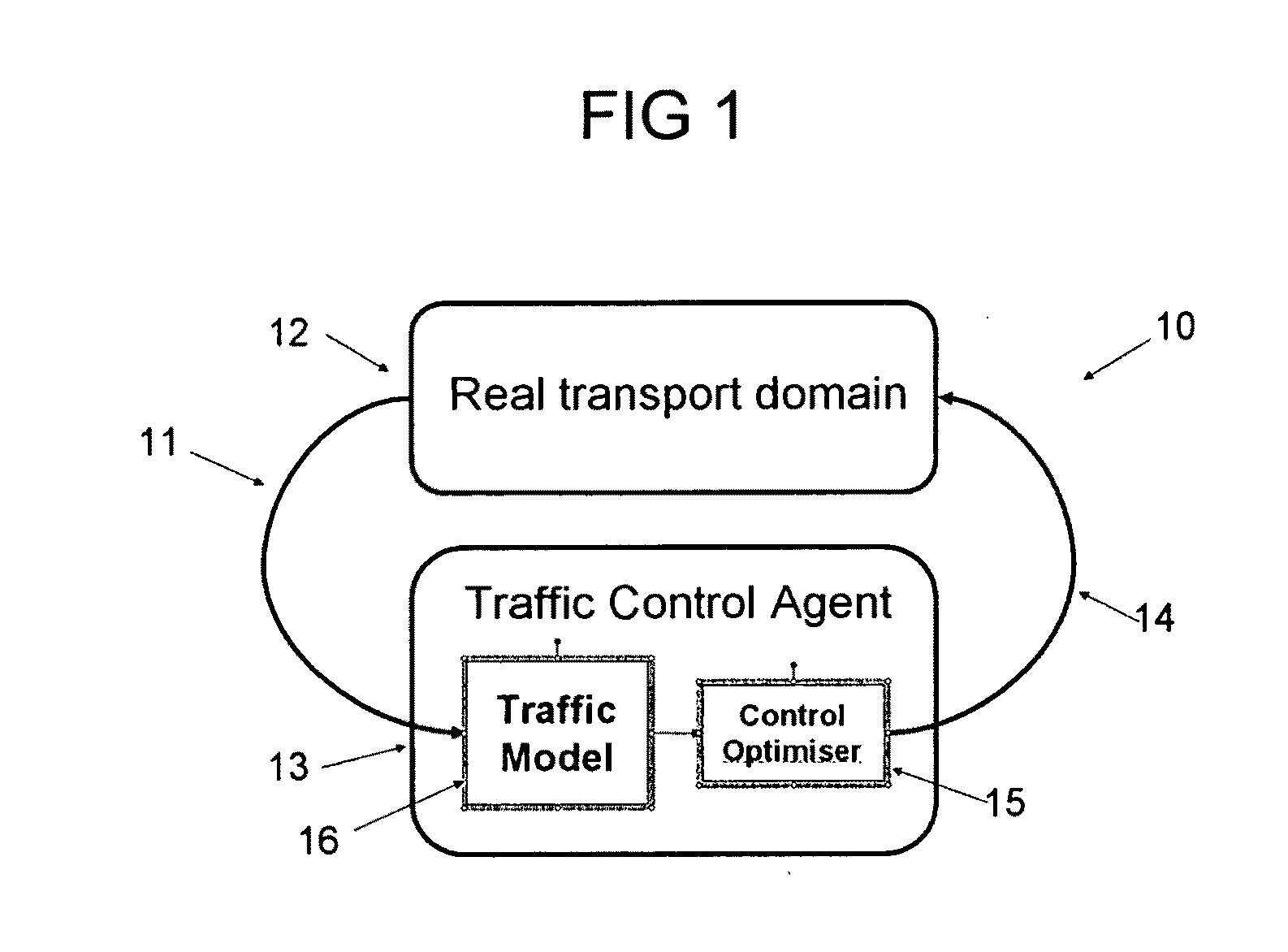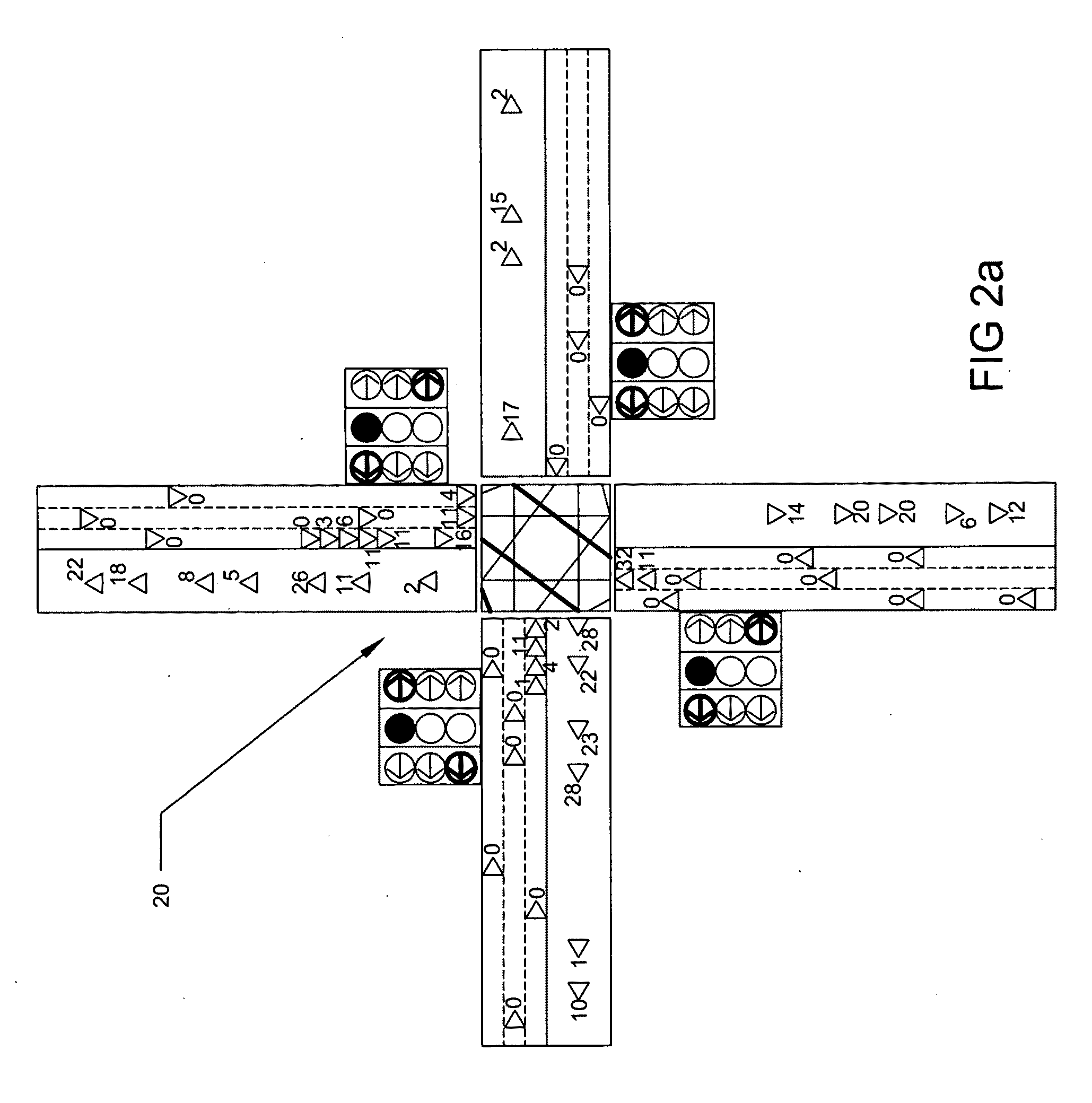Traffic signals control system
a traffic signal and control system technology, applied in traffic control systems, analog computers, hybrid computing, etc., can solve the problems of not responding at all to unexpected real time changes, conventional traffic control systems cannot provide adequate use of controlled intersections, and usually a long average waiting time for vehicles, etc., to achieve the effect of maximizing the reward
- Summary
- Abstract
- Description
- Claims
- Application Information
AI Technical Summary
Benefits of technology
Problems solved by technology
Method used
Image
Examples
Embodiment Construction
[0062]The present invention relates to a method and a system for controlling traffic lights at intersections. The present invention particularly relates to an intelligent traffic signals control system. The design of the traffic signals control system is based on an intelligent agent architecture, which can perceive its environment through sensors and act upon that environment through actuators.
[0063]FIG. 1 shows a high level architecture of the traffic signals control system 10 (“TSCS”) according to a first embodiment of the present invention. The architecture is based on a sense-act agent model. The arrow 11 from the real transport domain 12 to the control agent 13 represents incoming sensor data and the other arrow 14 represents the actuator data. In the TSCS 10, sensors typically include loop detectors and video cameras, radar devices, infra-red sensors, radio frequency identification (RFID) tags or Global Positioning System (GPS) devices or any other suitable sensors, and the a...
PUM
 Login to View More
Login to View More Abstract
Description
Claims
Application Information
 Login to View More
Login to View More - R&D
- Intellectual Property
- Life Sciences
- Materials
- Tech Scout
- Unparalleled Data Quality
- Higher Quality Content
- 60% Fewer Hallucinations
Browse by: Latest US Patents, China's latest patents, Technical Efficacy Thesaurus, Application Domain, Technology Topic, Popular Technical Reports.
© 2025 PatSnap. All rights reserved.Legal|Privacy policy|Modern Slavery Act Transparency Statement|Sitemap|About US| Contact US: help@patsnap.com



